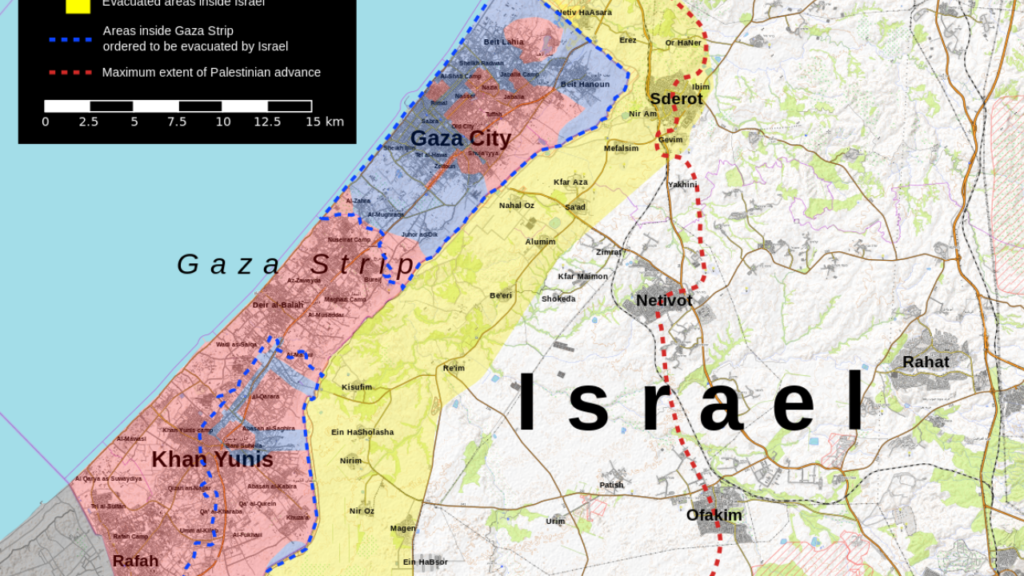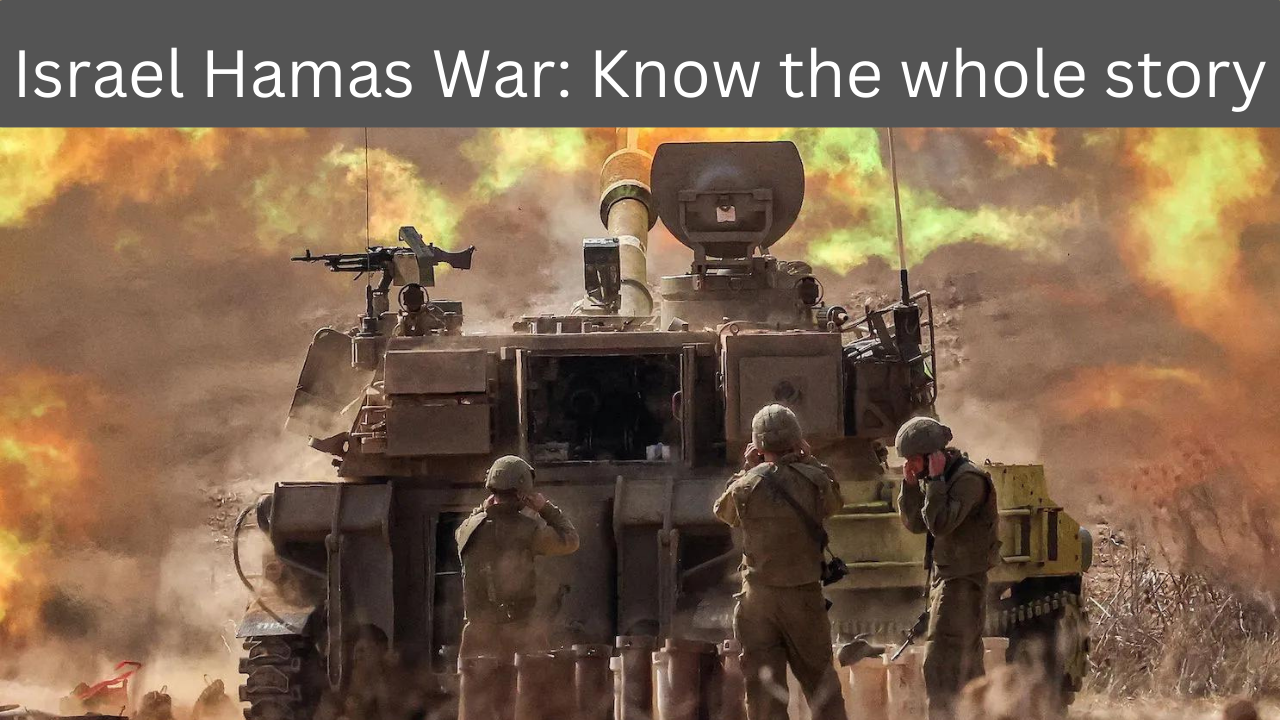Israel Hamas War: This is the latest chapter in the Israel Palestine conflict. In the late 19th century, the Jewish movement began in Palestine demanding a homeland for the Jews. Support for a Jewish state increased after World War II as the genocide of the Jews became fully visible to the public.
Hamas has attacked Israel with thousands of rockets and its fighters have entered Israel and killed. In response, Israel has declared war on Hamas. Israel warned that those who attack it will have to pay a price that they could not have imagined. Some analysts have warned that this could be the beginning of a third intifada. Before this, two intifadas had been quite popular among the youth of Palestine. Intifada means rebellion or rebellion. Palestinians present it as a rebellion against Israel’s illegal occupation.
Israel Hamas War: Historical conflict
This is the latest chapter in the Israel-Palestine conflict. In the late 19th century, a Jewish movement emerged in Palestine demanding a homeland for the Jews. Support for a Jewish state increased after World War II as the genocide of the Jews became fully visible to the public. It was decided to divide the British-controlled areas of Palestine into Jewish and Arab states. But soon after this a war started between the Jews and the Arabs. The First Arab-Israeli War ended with Israeli victory in 1949. 7,50,00 Palestinians were displaced and the area was divided into three parts. Jewish Israel, the Arab West Bank and the Gaza Strip. However, this did not end the conflict and continues till today.
Birth of Israel
In 1948, Israel was born with the support of the United Nations and Britain. Under the partition plan presented by the United Nations in 1947, it was decided to divide the British-controlled area of Palestine into a Jewish and Arab state. But soon after this it was decided to divide the state between Jews and Arabs. But soon after this, war started between Arabs and Jews. The First Arab–Israeli War ended with Israeli victory in 1949. 75,000 Palestinians were displaced and the area was divided into three parts.

Israel Hamas War: Since 75 years
In 75 years, Israel fought many wars with Arab countries and also faced terrorism from Palestine. Meanwhile, Israel strengthened itself by rapidly modernizing with the help of America and Western countries and expanded its occupation of Palestine beyond the limits set under the UN plan in 1947.
Israel Hamas War: Third Intifada
Some analysts have described the latest conflict as the beginning of a third intifada. Intifada is an Arabic word. In Arabic it means upheaval or deliverance. However, intifada is seen as a rebellion or rebellion. The first intifada lasted from 1987 to 1993, and the second intifada lasted from 2000–2005. These rebellions became very popular among the youth of Palestine.
Israel Hamas War: Hamas and it formation?
Hamas is the largest Palestinian militant Islamist group and one of the two major political parties in the region. At present it is ruling over more than 2 million Palestine population in Gaza Strip. Hamas is also known for armed resistance against Israel. Hamas was formed in the late 1980s following the beginning of the First Palestine Intifada. The first intifada began against Israel’s occupation of the West Bank and Gaza Strip. Israel, America, European Union, Canada, Egypt and Japan have designated Hamas as a terrorist organization.

Hamas, an acronym for Harakat al-Muqawamah al-Islamiyya (Islamic Resistance Movement), emerged as a response to the Israeli occupation and the perceived failure of existing Palestinian political entities. Unlike other Palestinian groups, Hamas combines political and militant activities, making it a multifaceted player in the region.
Hamas’s charter calls for the establishment of an Islamic state in historic Palestine and rejects any recognition of Israel. This uncompromising stance has been a major stumbling block in peace negotiations and has fuelled hostilities between the two parties.
Tension between Israel and Palestine
After the end of the Ottoman Empire in the Middle East after the First World War, this area was occupied by Britain. Mostly people of Jewish and Arab community lived here. Tension increased between the two. After this, Britain talked about creating a separate land for the Jews in Palestine. Jews consider this area the land of their ancestors. The Arab community also claims it. In such a situation the tension started increasing.

In 1947, the United Nations approved the decision to divide Palestine into two parts. One part of the Jews and the other of the Arab community. Amidst Arab opposition, on May 14, 1948, Jewish leaders announced the formation of the state of Israel. The First Arab–Israeli War occurred soon thereafter.
After the war, this entire area was divided into three parts. Israel, West Bank and Gaza Strip. The Palestinian population lives in the Gaza Strip and the West Bank. The Gaza Strip, approximately 25 miles and 6 miles wide, is home to a population of 2.2 million. This is the most densely populated area in the world in terms of population.
Gaza Strip: A Hotbed of Tensions
The Gaza Strip, a narrow piece of land on the eastern coast of the Mediterranean Sea, has become a focal point in the Israel-Hamas conflict. Since Israel’s disengagement from Gaza in 2005, the territory has been governed by Hamas, turning it into a de facto Palestinian statelet. The blockade imposed by Israel, coupled with internal governance challenges and economic struggles, has created a volatile situation.
Periodic outbreaks of violence in Gaza, including rocket attacks by Hamas and military responses from Israel, have further strained the already tenuous relationship. Civilians on both sides bear the brunt of these conflicts, with casualties and human suffering amplifying the urgency for a resolution.
Israel Hamas War: International Perspectives and Mediation Efforts
The Israel-Hamas conflict is not confined to the immediate geographical area; it has far-reaching implications and draws international attention. Various countries and organizations have attempted to mediate and broker peace agreements, with limited success. The United Nations, the United States, the European Union, and regional actors like Egypt and Qatar have all played roles in attempting to ease tensions and facilitate dialogue.
However, deep-seated distrust, historical grievances, and the lack of a mutually agreeable framework for a two-state solution have hindered progress. The international community’s inability to bring about a lasting resolution underscores the complexity of the situation.
Israel Hamas War: Humanitarian Concerns
The protracted conflict has taken a heavy toll on the civilian population, particularly in Gaza. Humanitarian organizations have consistently raised concerns about the impact of violence on civilians, citing issues such as inadequate access to healthcare, education, and basic necessities. The situation is further complicated by the densely populated nature of Gaza, making it challenging to avoid civilian casualties during military operations.
Israel Hamas War: Calls for De-escalation and Diplomacy
Despite the seemingly intractable nature of the Israel-Hamas conflict, calls for de-escalation and diplomatic solutions persist. International leaders and organizations, cognizant of the humanitarian toll and the potential for broader regional destabilization, continue to advocate for dialogue and negotiation.
A sustainable resolution to the Israel-Hamas conflict requires addressing the core issues, including the status of Jerusalem, the right of return for Palestinian refugees, and the establishment of viable and secure borders for both Israel and a future Palestinian state. Achieving a lasting peace will demand compromise, goodwill, and a commitment to recognizing the legitimate aspirations of both Israelis and Palestinians.
Israel Hamas War: Conclusion
The Israel-Hamas conflict remains a challenging and multifaceted issue that defies easy solutions. Rooted in historical grievances, territorial disputes, and competing national aspirations, the conflict has persisted for decades. Efforts to achieve a lasting peace must address the complex web of factors at play, including the historical context, the objectives of Hamas, the situation in the Gaza Strip, international perspectives, and humanitarian concerns.
While the path to resolution may be fraught with obstacles, the importance of continued diplomatic efforts, dialogue, and a commitment to finding common ground cannot be overstated. The Israel-Hamas conflict is a sobering reminder of the ongoing challenges in the Middle East, underscoring the need for sustained international engagement and a renewed commitment to forging a just and lasting peace in the region.
Always be updated with latest news articles, please visit on our website regularly…

